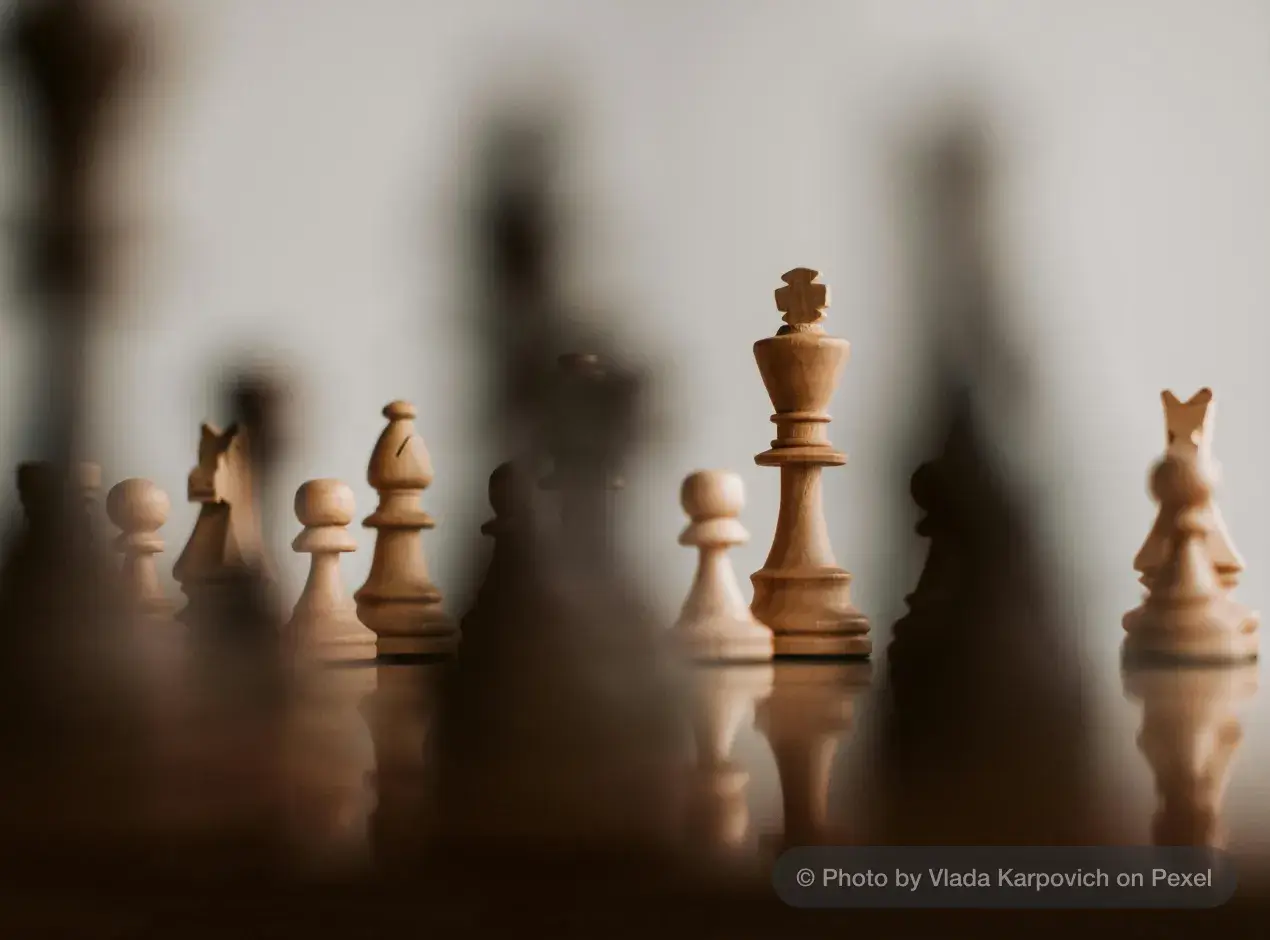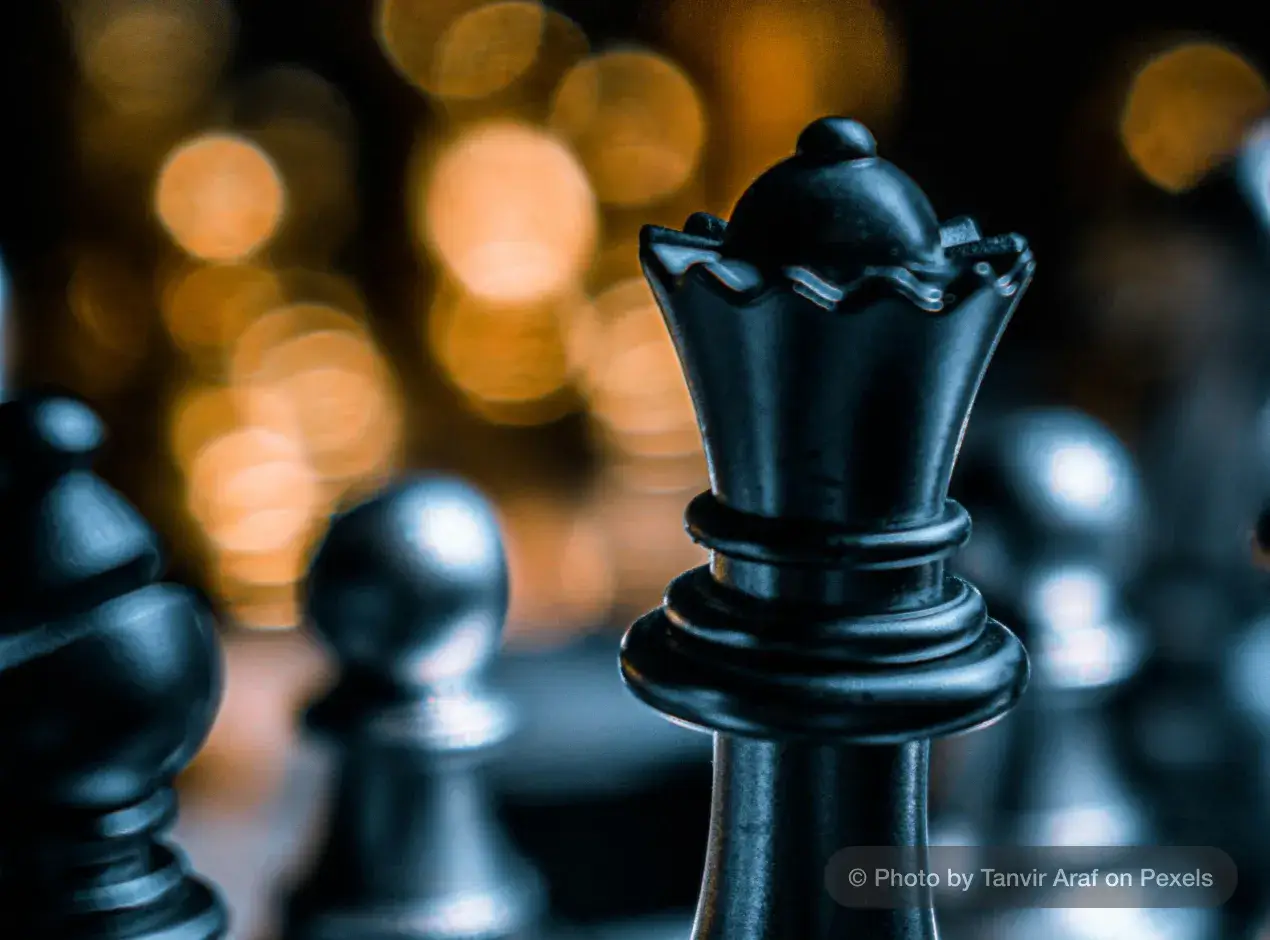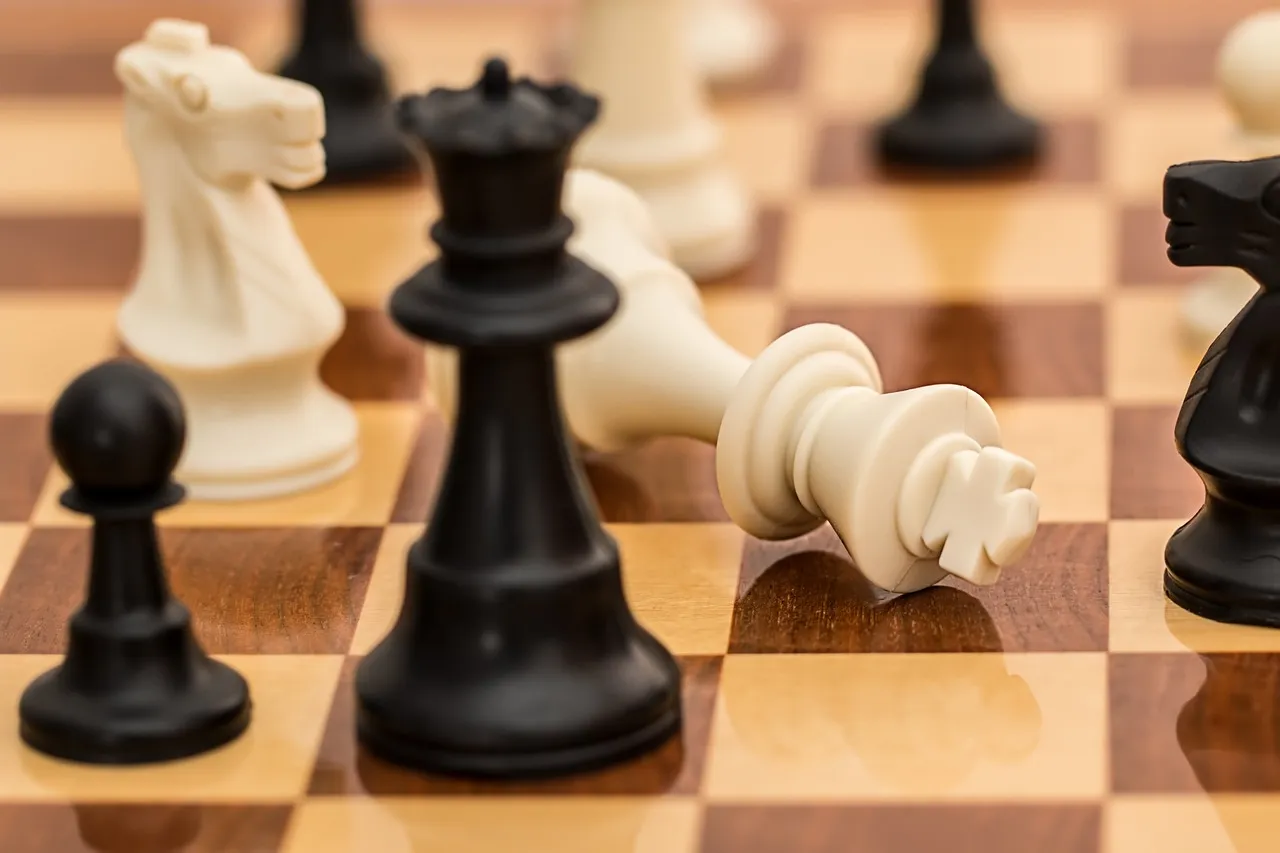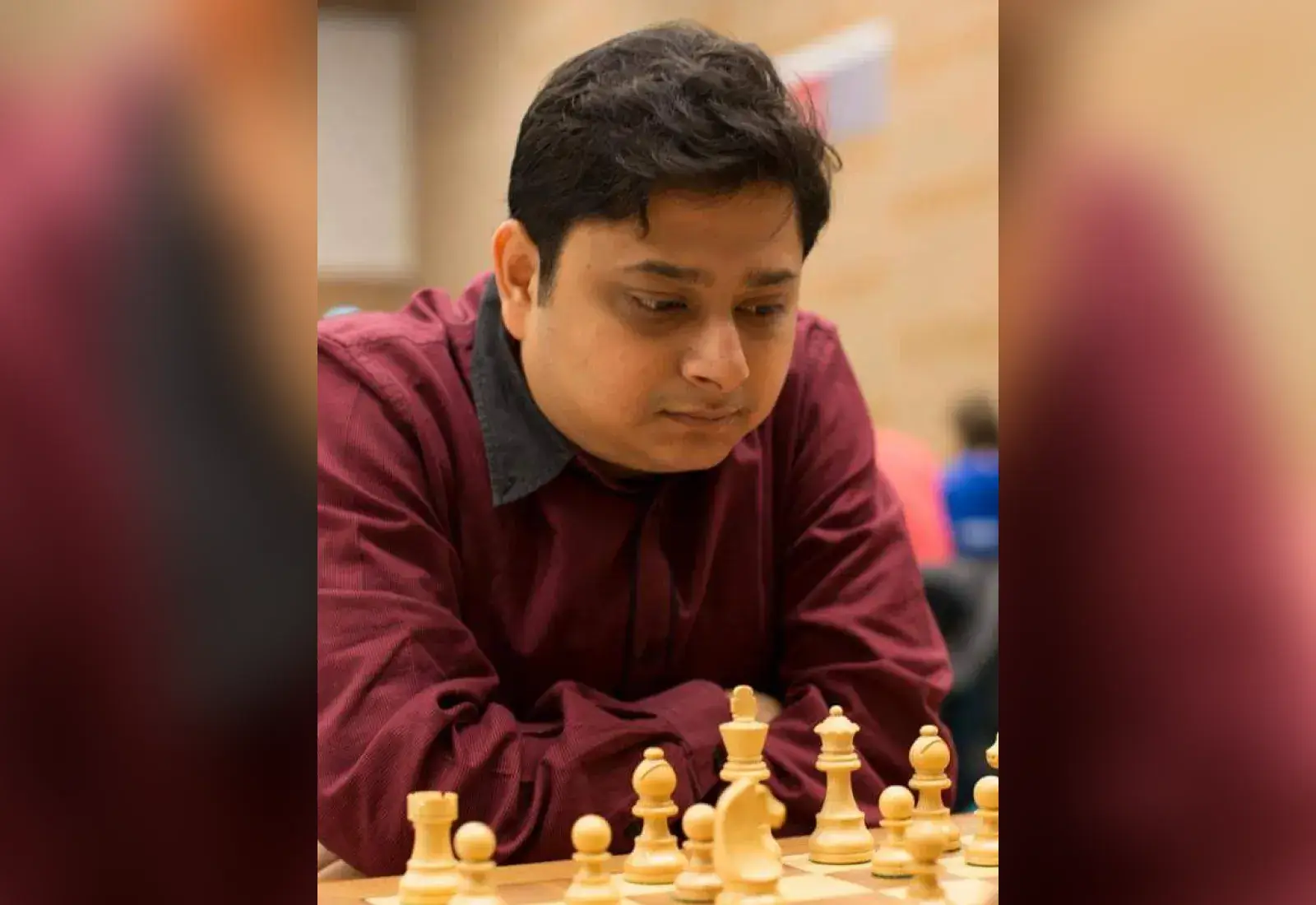7 Must Know Chess Strategy for Beginners
You are on a war footing!
Does this statement surprise you? You must be wondering in an article under the title - Chess Strategy for Beginners' where the war comes from.
But that is the very essence of chess. It's a war between two opponents - the white and the black over a board of 8x8 grid. There are no real weapons or artilleries that you can see on the battlefield here. But that does not mean that they are not there at all. They are all there in your mind. We call them chess strategies.
The goal is to read the mind of your opponent and plan your move to counter theirs. But before that, there are several other steps to follow. And that's exactly what we are aiming to learn in this article.
So, are you ready to champion the strategy game of chess? Then let's get started.
But before that...
7 Beginners Chess Strategies You Must Know
1. Know Your Grids
2. Know Your Pieces
3. Best First Move in Chess - the Grandmaster's Edge
4. What is Center Control in Chess? Why is it Important?
5. Save the King
6. Know the Potential of the Queen
7. Prophylaxis
1. Know Your Grids
The chessboard is comprised of a grid of squares, forming an 8x8 pattern. Each square is uniquely identified by a combination of a letter and a number.
The rows of the chessboard are called "ranks," and they are numbered from 1 to 8, starting from the bottom of the board. The columns are called "files," and they are labeled with letters from "a" to "h," starting from the left side of the board. So, the intersection of a rank and a file uniquely identifies each square on the chessboard.
So, if you're looking at a specific square, such as the one in the bottom left corner, we call it "a1". At the same time, the one in the top right corner would be "h8". This system makes it easy to refer to any square on the chessboard.
2. Know Your Pieces
Knowing the chess pieces is important. Each chess piece has a specific and unique role and movement in the game. If you don't know how your pieces move, it's like trying to play a game without knowing the rules. If you know your pieces, you can plan your moves, protect your pieces, and also capture your opponent's pieces. It's like having a map to guide you through the game, helping you make smart decisions and win. That is why the most significant part of the chess strategy is to know the chess pieces.
Pawn
- Movement: - Pawns move forward one square, but on their first move, they can choose to move forward two squares. They capture diagonally.
- Role: Pawns are the foot soldiers of the army. They control the center and support other pieces.
- Significance: Pawns are crucial for controlling territory and creating space for other pieces. Their positions become stronger if they reach the opponent's back rank.
Rook
- Movement: Rooks move horizontally or vertically across the board any number of squares.
- Role: Rooks are powerful pieces for controlling files and ranks. They are great for attacking and defending.
- Significance - Rooks often work together in the endgame. They deliver checkmate and control the key squares.
Knight
- Movement - Knights move in an "L" shape: two squares in one direction and then one square perpendicular to that.
- Role - Knights are unique because they can jump over other pieces. They are excellent for forking and attacking pieces.
- Significance - Knights are valuable for their ability to threaten pieces. They can reach places that other pieces can't reach. They're powerful in closed positions.
Bishop
- Movement - Bishops move diagonally across the board any number of squares.
- Role - Bishops are best used in open positions where they can control long diagonals. They complement each other well if they control opposite-colored squares.
- Significance - Bishops are strong attackers and defenders. They work together with the pawns and support them.
Queen
- Movement - Queens can move any number of squares in any direction. That is horizontal, vertical, or diagonal.
- Role - The Queen is the most powerful piece on the board. She is capable of controlling vast stretches of the board and delivering checkmate.
- Significance: The Queen is a formidable attacker and defender. She's often central to tactics and strategies.
King
- Movement - Kings can move one square in horizontal, vertical, or diagonal directions.
- Role: The King's primary role is survival. If the King gets checkmated, the game ends.
- Significance - The game is all about protecting and safeguarding the king. The king is the central character of the chess game.
Arrangement of the Pieces Before the Game Starts
- Before the game starts, the pieces are arranged in the following manner -
- Each player has 16 pieces arranged on the first two ranks of the board.
- Rooks, Knights, and Bishop are two in number.
- Rook, Knight, Bishop, Queen, King, Bishop, Knight, and Rook are arranged from left to right of the player. The eight pawns are placed on the second rank in front of these pieces.
3. Best First Move in Chess - the Grandmaster's Edge
The first move in chess is crucial because it sets the tone for the rest of the game. It helps to control the center and prepares the ground for developing the pieces and unfolding the game. It helps the player to control key squares and create harmonious piece coordination. Thus the players gain an early advantage and dictate the flow of the game.
Some iconic first moves by grandmasters include:
- 1. e4 - This move, advancing the pawn in front of the king by two squares, is the most popular opening move in chess. It helps control the center and frees the queen and bishop for future development. Many grandmasters, such as Bobby Fischer and Garry Kasparov, have favored this move for its aggressive and flexible nature.
- 1. d4 - This is yet another popular opening move. It includes advancing the pawn in front of the queen by two squares. Grandmasters like Anatoly Karpov and Vladimir Kramnik deploy this opening strategy. It also controls the center and allows for the development of the queen's bishop and knight.
- 1. Nf3 - This move, developing the knight to f3, is a flexible and solid choice. It prepares to control the center. It also allows for various pawn structures and development plans. Grandmasters like Magnus Carlsen and Viswanathan Anand often employ this move. It helps them to maintain flexibility and adaptability in their opening strategies.
- 1. c4 - This move is called the English Opening. This move advances the pawn in front of the queen's knight by one square. It is an indirect way to control the center. It allows for versatile development and can lead to a wide range of pawn structures. Grandmasters such as Mikhail Botvinnik and Fabiano Caruana have utilized this opening to create diverse and dynamic positions.
Also read - How to Play Chess: 4 Basic Rules of Chess You Must Know
4. What is Center Control in Chess? Why is it Important?
Center control in chess refers to influencing the four central squares of the board. These squared are d4, d5, e4, and e5. These squares are strategically crucial. They allow for greater mobility of pieces. They provide opportunities for attacks and counterattacks. And they offer a strong foundation for launching pawn breaks and maneuvers.
Center control is important for several reasons:
- Mobility - Controlling the center allows pieces to move more freely across the board. This mobility enables players to quickly bring their pieces into play. It helps to coordinate their forces and attack the opponent.
- Space - It gives a player more space to maneuver their pieces and organize their forces. It restricts the opponent's mobility and limits their options. The opponent finds it difficult to develop their pieces and launch counterattacks.
- Pawn Structure - The central pawns often form the backbone of a player's pawn structure. It supports their pieces, defends key squares, and restricts the opponent's pawn advances.
- Initiative - Center control gives a player the initiative. It allows them to dictate the pace and direction of the game. They can choose whether to be aggressive and launch attacks on the opponent's king. Or if they want to be defensive by consolidating their position and preparing for counterplay.
- Flexibility - Controlling the center gives the option to choose opening variations and developing strategic plans. It allows players to adapt to changing circumstances, seize opportunities, and exploit weaknesses in the opponent's position.
5. Save the King
The sole purpose of this game is to save the king. The idea is to keep your king under guard and expose the opponent's king. The king is most vulnerable when exposed. That is why the players should always shield the king before planning attacks on the opponent.

So,
Castle the king early and take him out of the center. Castling is a fundamental defensive move. One of the ways is to move the king two squares toward a rook. Then move the rook to the square next to the king on the opposite side.
Pawn shield is another effective strategy. Here the pawns are placed in front of the king to block enemy attack. But one word of caution here. Place the pawn around the king only when you have other pieces to protect the weak corners around the pawns.
Keep the king away from the center. Why?
Two reasons -
- First - The center of the board is where the action happens first. Both players want to control it, so they often trade pawns there, opening up lines in the middle. You don't want your king to be in the middle when this happens because it could become a target!
- Second - When your king is in the center, it can be attacked from any direction. But if you castle, putting your king on the side of the board, it's safer. Especially if you control the center well, it's hard for your opponent to attack your king there.
Be it in the game of chess or war, often, the best defense is a good offense. You have to keep your opponent under constant threat. Launch counterattacks divert their attention from their king, and force them to defend instead of attacking. Block the pieces of your opponent and chase them away from your king.
6. Know the Potential of the Queen
The queen is the most significant piece of the chess board after the king. She is an effective attacker as well as a defender. Her ability to move in any direction is a great advantage that the players can use for their benefit.
When placed at the center of the board, the queen can control 27 squares. Having said that, it is significant to understand that the queen is also vulnerable. So, avoid moving the queen to the center too early in the game. Consider making this move towards the middle of the game.

While opening the game, let the queen support the other pieces from behind. Focus on developing your minor pieces (knights and bishops). Let them take control of the center and create adequate support and protection for the queen to step in. Try to maintain a balance and coordination between the queen and the rest of your forces.
After you develop the minor pieces and castle the king to safety, you can move the queen into active positions. Castling early helps to secure the king's safety. It frees up the queen to take part more actively in the game.
7. Prophylaxis
In chess, prophylaxis is a big deal if you want to get better. It's all about stopping your opponent from doing what they want to do. You need to think ahead and stop their plans while making your own.
Basically, it's like making moves that block your opponent's moves before they even get the chance to make them. It's like playing defense in sports—it's as important as knowing how to attack.
All the best practices discussed above include center control, early castling, developing the pieces carefully, devising your attacking and defending stances, and ensuring effective prophylactic measures deployment.
At the same time, you should keep an eye on your opponent. Keep their moves in check and under constant threat.
In the game of chess, foresight and strategy reign supreme. Whether you're just starting out or a seasoned player, mastering the art of prophylaxis can be your secret weapon to outmaneuver your opponent and claim victory.
Concluding…
In chess, every move matters. From controlling the middle to moving your pieces carefully, each choice decides the game's direction. Whether you're just starting or a pro, remember chess is about thinking, guessing, and creating. Master the basics—own the center, move your pieces together, and guess what your opponent will do next. Chess is a challenge, but also fun. Enjoy the game, learn from it, and aim for victory on the board.
Chess is a game that will try your patience, wit, and tenacity - all at the same time. But it is fun to learn the winning tactics. If you want to learn chess strategies that will put you on the right track to becoming a grandmaster, explore these chess online classes.








